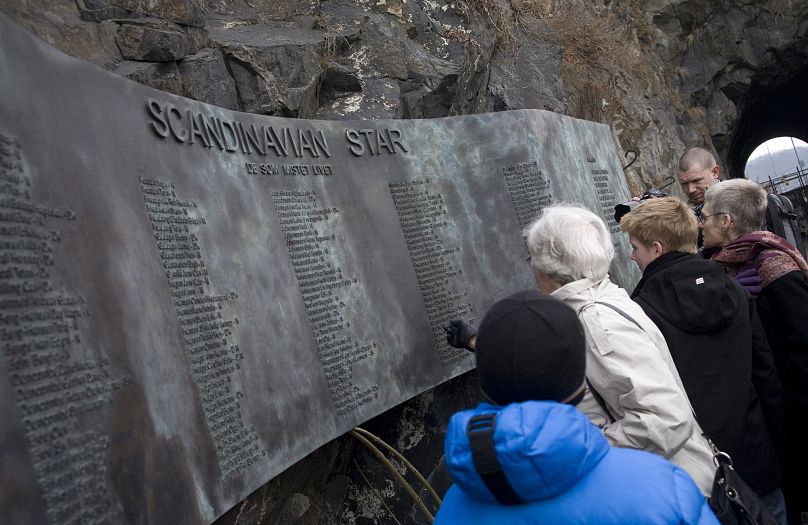Danish lawmakers have agreed to set up a task force to look into a 1990 ferry fire that killed 159 people, one of Scandinavia's worst peacetime maritime disasters.
Danish MPs have agreed to set up a new independent task force to investigate a deadly 1990 ferry fire.
A total of 159 people were killed when the Scandinavian Star was engulfed in flames over a voyage from Norway to Denmark.
Norwegian police initially believed that the fire was a result of arson, but a later investigation ruled out the main suspect.
The new probe could lead to a new police investigation into one of Scandinavia's worst peacetime maritime disasters.
A majority of MPs in the Danish Parliament agreed to the new investigation on Wednesday.
Denmark's Justice Minister said in a statement that the task force would focus on the ship's owner and the vessel's insurance.
"We owe this not least to the victims, but also to the survivors, who to this day continue to be left with unanswered questions," Nick Hækkerup said.
What happened to the Scandinavian Star?
According to the captain of the vessel, the Scandinavian Star was carrying 395 passengers and 97 crew as it set sail from the Norwegian capital of Oslo on 6 April 1990.
The ship - built in 1971 - was heading to Frederikshavn, northern Denmark, on an overnight voyage across the Skagerrak strait.
At around 02:00, a passenger discovered a fire on board and informed the ship's crew. Despite efforts, the blaze and thick smoke quickly spread across the ship's decks due to insufficient fire doors.
The ship was towed to the Swedish port of Lysekil where the fire authorities extinguished the blaze after a number of hours.
Many of the 159 victims - including 136 Norwegian passengers - died huddled together in cabins or trapped in corridors.
Since then, a number of investigations have been conducted into the case, but the disaster remains unsolved.
Norwegian police initially concluded that the fire was started by a 37-year-old Danish truck driver who died in the blaze.
A later probe determined that there were several separate fires and that several people would have been needed to start them.
In 2014, the investigation was reopened and the truck driver - who had three previous convictions for arson - was posthumously cleared.
Inconclusive investigations
The first report into the fire concluded that the 20-year-old Bahamas-registered ferry had been unfit to sail.
A Danish shipowner had taken over the Scandinavian Star on March 30, just a week before the fire, and had chosen to sail the ferry on a new route with a new crew.
The report also concluded that the ferry's fire alarms were difficult to hear, the crew lacked safety training, and the captain had abandoned the ship when he should have been leading rescue efforts on board.
Safety equipment such as sprinklers, which could have prevented the disaster, was also missing.
Relatives claimed that the fire had been started by crew members as part of an insurance fraud scam. The ship had been allegedly insured for twice its value shortly before the fire broke out.
The owner of the Scandinavian Star has since died and the company that operated the ferry no longer exists.
Denmark has expressed hope that a new investigation into the fire could uncover new information and re-open police operations.
"I am pleased that a broad majority has now agreed to have elements of the case of the tragic fire at Scandinavian Star investigated," Hækkerup said on Wednesday.
"The investigation will hopefully be able to shed more light on the facts of the case, and the task force will have to make its assessment of whether there are grounds for the police to launch a further investigation into the deadly fire."
Peter Skaarup, MP from the Danish People's Party, was one of many other lawmakers who welcomed the new investigation, describing the fire as a "stain on Denmark's history".
"The Scandinavian Star accident is a tragic part of our history, and we are prepared for the matter to be thoroughly investigated," added Mads Andersen of the Conservative People's Party.
International maritime codes for fire safety systems were comprehensively amended in 1992, two years after the disaster.












